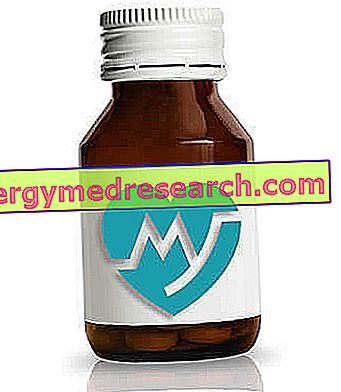Definition
The spots on the skin, especially those that form on the face, constitute an aesthetic discomfort that afflicts many people, especially women of a younger age. The spots on the skin can be of different colors, as well as they can differentiate according to the trigger agent.
Among the most known types of skin blemishes, we mention: vitiligo, Pityriasi Versicolor, freckles, freckles, skin blemishes during pregnancy.
Causes
- Vitiligo → white spots with hereditary etiology, expression of a lack of melanocyte pigment synthesis by melanocytes. Target: nails, areas near openings, hands, feet, neck. Risk factors: thyroid dysfunction, stress, Diabetes Mellitus, Addison's disease
- Pityriasi Versicolor → white patches on the skin caused by a fungal infection (Pityrosporum Orbicolare). Target: neck, trunk, back
- Freckles → slightly dark spots on the skin, of regular and round shape, which occur especially in subjects with red hair and fair skin. The sun and the administration of estrogens can make them more evident. Target: face and body
- Ephelids → dark spots on the skin, of irregular shape, genetic fruit of a hyperpigmentation of the skin triggered by an excessive synthesis of melanin by melanocytes. Freckles are sensitive to solar radiation; for this reason they tend to become more evident in the summer, on the face and on the decolté.
- Stains of the skin during pregnancy (melasma) → expression of a build-up of melanin at the level of the face (in particular), neck and ears. The spots become darker with sun exposure; Chloasma also occurs in women taking the contraceptive pill (alteration of the endocrine axis).
Information on skin spots - skin care drugs does not intend to replace the direct relationship between health professional and patient. Always consult your doctor and / or specialist before taking stains on the skin - skin care drugs.
drugs
The various types of spots on the skin listed in this article do not portray any extra-dermatological expression: in other words, neither dark spots on the skin (such as melasma and age spots) nor white spots (eg vitiligo) must be considered a clue of hidden pathology. However, it is important to point out that some spots on the skin show a malfunction of some organ: to give an example, the subjects suffering from dysfunctions of the adrenal glands are more subject to the formation of white spots on the skin.
Pityriasi Versicolor is the only skin discomfort (described here) that can lead to a very specific external cause: these white spots often depend (though not exclusively) on a fungal infection; therefore, the most widely used drugs for treating them are antifungals, to be applied topically.
The dark spots on the skin, especially those related to aging, are sensitive to solar radiation, stress, smog and smoke: the skin, made weaker by free radicals, becomes more and more fragile, so the mechanisms that regulate the synthesis of melanin become weak. In such circumstances, the melanin pigment undergoes an alteration, and is accumulated on the skin, creating spots. For the same reason, the freckles are particularly sensitive to solar radiation: to lighten the aesthetic disorder, it is recommended not to expose yourself to the sun during the hottest hours, and to always cover the skin with specific sunscreens.
The dark spots on the skin of the face can therefore be prevented by applying creams with sun filters before exposing oneself to the sun; it is recommended to avoid overcrowded and highly polluted places, and to stop smoking.
Women taking estrogen-progestin drugs (birth control pills) are more prone to spots on the skin, as well as pregnant women, an expression of the hormonal alteration to which the body is subject: in the first case, the suspension of drug therapy progestin estrous favors the "cancellation" of the spots on the skin; in the second case, pregnancy stains tend to disappear immediately after birth.
Most blemishes on the skin do not require specific drugs; however, if the chromatic alteration constitutes a considerable aesthetic discomfort, topical application of lightening agents is recommended, useful for attenuating the skin spots.
- Kojic acid (eg. Tial skin, Rougj): by interfering with the pigmentation processes of the skin, the drug has its own lightening effect on the stain. The drug is available as a cream to be applied directly to the stain. Inordinate use of the drug may cause local irritation, dermatitis or permanent hypomelanosis.
- Azelaic acid (eg. Skinoren, Finacea): depigmented agent used to lighten dark spots on the skin, especially those related to aging. Apply 20% cream to the affected skin twice a day (morning and evening). It is recommended to use mild detergents and not to scratch the skin. The drug is widely used in therapy for acne: not surprisingly, even acne can promote the formation of dark spots on the skin.
- Hydroquinone: the drug can be used only after medical prescription, considering the noticeable side effects (erythema, irritation) that derive from its use for long periods. In cosmetics, its use has been banned. Consult your doctor.
- Vitamin E: powerful antioxidant indicated to counteract free radicals. Useful for protecting skin blemishes such as freckles.
Medication for the treatment of white spots on the skin dependent on fungal infections
- Miconazole 2% (ex. Cruex, Micatin): it is recommended to apply a thin layer of cream directly on the white spot with fungal etiology, twice a day, after careful cleaning and drying of the area.
- Ciclopirox (eg Fungizone): indicated to treat fungal infections with Candida albicans, including white patches of skin. Apply a thin layer of cream on the affected area, twice a day, for 2 weeks.
- Clotrimazole 1% (eg Canesten, Mycelex): in the form of cream, powder or solution, the drug is indicated to treat white spots on the skin dependent on a fungal infection. Apply a sufficient quantity of product to cover the area affected by the stain, twice a day for 2-4 weeks, depending on the nature and severity of the condition.
- Ketoconazole (eg. Ketoconazole EG): it is recommended to apply the drug in the form of 2% cream in the area affected by the skin spot, 1-2 times a day, for at least 2 weeks, in full compliance with the medical indications.
Even the opaque creams are indicated to mask the disorder: clearly, the application of these products directly on the skin is not useful for therapeutic purposes (it does not in any way affect the synthesis of melanin); however, by covering the stain with colored pigments, the disturbance becomes less conspicuous and less apparent. In addition to opaque creams, it is always recommended to apply creams with UVA and UVB filters on the skin, to prevent skin blemishes.
Notes : DO NOT apply drugs with lightening action to treat spots on the skin during pregnancy, to avoid negative repercussions on the fetus.



